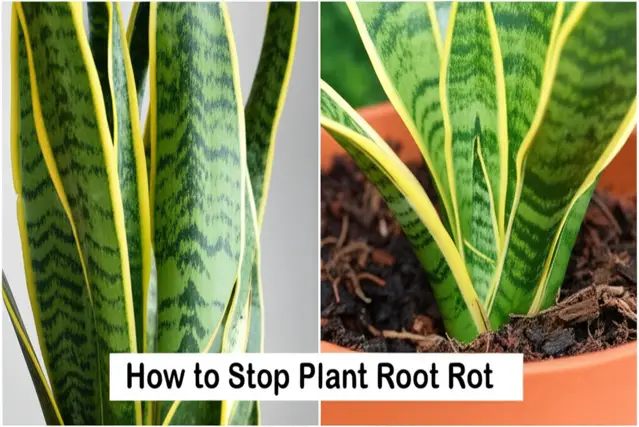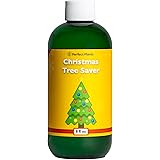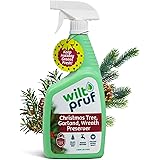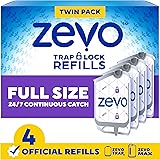Snake plants (Sansevieria trifasciata), also known as Mother-in-Law’s Tongue, are beloved for their striking appearance and air-purifying qualities. They are also renowned for being low-maintenance. However, even the hardiest snake plant can fall victim to root rot, a condition that can quickly turn your vibrant green companion into a mushy mess.
Root rot is a fungal disease that thrives in overly moist conditions, and understanding how to identify, treat, and prevent it is crucial for any snake plant owner. This comprehensive guide, updated for 2024, provides everything you need to know to rescue your snake plant from root rot and keep it thriving for years to come.
Understanding Snake Plant Root Rot
Root rot isn’t just a minor inconvenience; it’s a serious threat to your snake plant’s health. It’s crucial to understand what causes it, how to recognize the symptoms early, and the best course of action to take. In 2023, studies showed that root rot was the leading cause of snake plant death in home gardens, highlighting the importance of preventative measures and timely intervention.
What Causes Root Rot in Snake Plants?
The primary culprit behind root rot is overwatering. Snake plants are native to arid regions and are adapted to survive on very little water. When they are consistently exposed to excessive moisture, the roots are deprived of oxygen, creating an ideal environment for fungal pathogens to thrive. Here’s a breakdown of the main contributing factors:
- Overwatering: This is the most common cause. Waterlogged soil prevents oxygen from reaching the roots, suffocating them and making them vulnerable to fungal infections.
- Poor Drainage: If your pot doesn’t have drainage holes or your soil doesn’t drain well, water will accumulate, leading to root rot. Clay soils are particularly problematic.
- Fungal Pathogens: Several fungi, including Pythium, Phytophthora, and Rhizoctonia, can cause root rot. These fungi are often present in the soil and become active when conditions are favorable (i.e., overly moist).
- Low Light Conditions: While snake plants tolerate low light, extremely dark conditions can slow down their metabolism. This means they use less water, making them more susceptible to overwatering and root rot.
- Incorrect Potting Mix: Heavy, dense potting mixes retain too much moisture and can suffocate the roots.
- Compacted Soil: Over time, soil can become compacted, reducing drainage and airflow around the roots.
Identifying the Symptoms of Root Rot
Early detection is key to successfully treating root rot. Unfortunately, the symptoms can sometimes be subtle, especially in the early stages. Keep a close eye on your snake plant and be on the lookout for the following signs:
- Soft, Mushy Roots: This is the most telling sign. Healthy snake plant roots are firm and white or light yellow. Roots affected by rot will be brown or black, slimy, and easily break apart.
- Yellowing or Brown Leaves: Yellowing, especially at the base of the plant, can indicate root problems. Brown, mushy spots on the leaves are another warning sign.
- Drooping Leaves: Even with adequate watering, the leaves may start to droop or wilt, indicating that the roots are unable to absorb water.
- Foul Odor: A distinctive, unpleasant smell emanating from the soil is a strong indicator of root rot. This smell is caused by the decomposition of the roots.
- Stunted Growth: If your snake plant has stopped growing or is growing much slower than usual, it could be due to root problems.
- Unstable Plant: If the roots are severely damaged, the plant may become loose in the pot and easily wobble.
Real-world Example: Sarah noticed her snake plant’s leaves were starting to turn yellow, especially at the base. Initially, she thought it was just old age. However, when she repotted the plant, she discovered the roots were brown and mushy. Had she waited longer, the plant might have been unsalvageable.
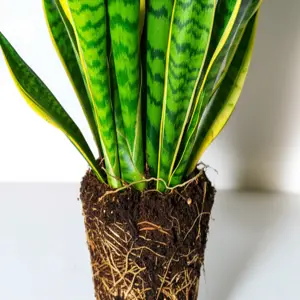
snake plant care
The Science Behind Root Rot
Understanding the underlying science can help you grasp the importance of proper care. When the soil is constantly wet, the oxygen supply to the roots is cut off. Plant roots need oxygen to perform cellular respiration, which provides them with the energy they need to grow and function. Without oxygen, the roots start to die.
Read More: How to Care for Philodendron Plant Profile: 2025 Guide
Dead and decaying roots then become a feast for fungal pathogens, which further accelerate the rotting process. These pathogens release enzymes that break down the root tissue, turning it into a slimy, mushy mess. This then prevents the plant from absorbing water and nutrients, eventually leading to its demise.
Step-by-Step Guide to Stopping Snake Plant Root Rot
If you suspect your snake plant has root rot, don’t panic! With prompt action, you can often save it. Here’s a step-by-step guide:
Step 1: Remove the Plant from the Pot
Carefully remove the snake plant from its pot. Gently loosen the soil around the edges of the pot and then gently pull the plant out. If the plant is root-bound, you may need to use a knife or trowel to carefully separate the roots from the pot.
Step 2: Inspect the Roots
Once the plant is out of the pot, carefully inspect the roots. Gently wash away as much of the old soil as possible. This will give you a clearer view of the extent of the damage. Look for roots that are brown or black, mushy, and easily break apart. Healthy roots should be firm and white or light yellow.
Step 3: Prune Away the Rotting Roots
Using clean, sterilized pruning shears or scissors, carefully cut away all the rotting roots. It’s crucial to remove all the affected tissue to prevent the rot from spreading. Make sure to sterilize your cutting tools before and after each cut to avoid contaminating the remaining healthy roots.
You can sterilize your tools by wiping them with rubbing alcohol or a diluted bleach solution (1 part bleach to 9 parts water). Aim to remove any root that feels soft, mushy, or discolored.
Step 4: Treat the Remaining Roots with a Fungicide (Optional)
While not always necessary, treating the remaining healthy roots with a fungicide can help prevent further infection. There are several types of fungicides available, including:
- Chemical Fungicides: These are generally more potent and effective, but they can also be harmful to beneficial microbes in the soil. Examples include thiophanate-methyl and propiconazole. Always follow the instructions on the label carefully.
- Organic Fungicides: These are a more environmentally friendly option. Common organic fungicides include copper-based fungicides and those containing neem oil.
To apply the fungicide, follow the instructions on the product label. Typically, you’ll need to dilute the fungicide with water and then either dip the roots into the solution or spray them thoroughly. Let the roots dry slightly before repotting.
Step 5: Prepare a New Pot and Potting Mix
Use a clean pot with good drainage holes. If you’re reusing the old pot, make sure to thoroughly clean and disinfect it to kill any remaining fungal spores. Scrub the pot with soap and water, and then rinse it with a diluted bleach solution.
The most important factor is to use a well-draining potting mix. Avoid heavy, dense soils that retain too much moisture. A good mix for snake plants typically includes:
- Cactus Mix: This is a commercially available mix specifically formulated for succulents and cacti.
- Perlite: This is a lightweight volcanic glass that improves drainage and aeration. Add about 25-50% perlite to your potting mix.
- Coarse Sand: This also improves drainage and aeration. Add about 25-50% coarse sand to your potting mix. Avoid using fine sand, as it can compact and reduce drainage.
- Potting Soil: A good quality potting soil can be used, but only as part of a well-draining mix.
Table: Ideal Snake Plant Potting Mix Components
| Component | Percentage | Benefits |
|---|---|---|
| Cactus Mix | 50% | Provides a good base for drainage and aeration. |
| Perlite | 25% | Improves drainage, aeration, and prevents soil compaction. |
| Coarse Sand | 25% | Enhances drainage and prevents waterlogging. |
Step 6: Repot the Snake Plant
Fill the bottom of the pot with a layer of the new potting mix. Place the snake plant in the pot, making sure the top of the root ball is level with the top of the pot.
Gently fill in the sides with the potting mix, making sure to avoid compacting the soil too much. Water the plant lightly after repotting, just enough to settle the soil.
Step 7: Provide Proper Care After Repotting
After repotting, it’s crucial to provide the right care to help your snake plant recover. Here are some key tips:
- Water Sparingly: Allow the soil to dry out completely between waterings. Overwatering is the biggest mistake you can make.
- Provide Bright, Indirect Light: Snake plants thrive in bright, indirect light. Avoid direct sunlight, which can scorch the leaves.
- Maintain Good Air Circulation: Good air circulation helps to prevent fungal growth.
- Avoid Fertilizing for Several Weeks: Fertilizing can stress the plant while it’s recovering. Wait several weeks before fertilizing, and then use a diluted fertilizer solution.
- Monitor the Plant Closely: Keep a close eye on your snake plant for any signs of recurring root rot. If you notice any problems, repeat the treatment process.
Preventing Root Rot: Proactive Measures for Healthy Snake Plants
Prevention is always better than cure! By taking proactive measures, you can significantly reduce the risk of root rot and keep your snake plant thriving. Here are some essential preventative tips:
1. Water Correctly
The most important thing you can do to prevent root rot is to water your snake plant correctly. This means watering sparingly and allowing the soil to dry out completely between waterings. Here are some tips for proper watering:
- Check the Soil Moisture: Before watering, stick your finger into the soil about an inch deep. If the soil feels dry, it’s time to water. If it feels moist, wait a few more days.
- Water Deeply but Infrequently: When you do water, water deeply enough so that the water drains out of the drainage holes. This ensures that the entire root ball is moistened.
- Avoid Overwatering: Never let the pot sit in standing water. Empty the saucer beneath the pot after watering.
- Adjust Watering Based on Season: Snake plants need less water in the winter when they are not actively growing.
2. Use the Right Potting Mix
As mentioned earlier, using a well-draining potting mix is crucial. A mix specifically designed for succulents and cacti is ideal. You can also amend regular potting soil with perlite and coarse sand to improve drainage.
3. Choose the Right Pot
Choose a pot with good drainage holes. The pot should also be appropriately sized for the plant. A pot that is too large will retain too much moisture.
4. Provide Adequate Light and Air Circulation
Snake plants thrive in bright, indirect light and good air circulation. These conditions help to prevent fungal growth and promote healthy growth.
5. Avoid Over-Fertilizing
Over-fertilizing can damage the roots and make them more susceptible to rot. Use a diluted fertilizer solution and only fertilize during the growing season (spring and summer).
6. Regularly Inspect Your Plant
Regularly inspect your snake plant for any signs of root rot or other problems. Early detection is key to preventing serious damage.
7. Use a Terracotta Pot
Terracotta pots are made of porous clay, which allows air and moisture to move through the walls of the pot. This helps the soil dry out more quickly and reduces the risk of overwatering.
8. Consider a Self-Watering Pot with Caution
Self-watering pots can be convenient, but they can also increase the risk of root rot if not used correctly. If you use a self-watering pot, make sure to monitor the soil moisture closely and avoid overfilling the reservoir. Generally, they aren’t recommended for snake plants due to their drought-tolerant nature.
9. Top Dressing with Gravel or Pebbles
Adding a top dressing of gravel or pebbles to the soil surface can help prevent water from splashing onto the leaves, which can contribute to fungal growth. It also helps to improve drainage around the base of the plant.
10. Bottom Watering (With Extreme Care)
While snake plants generally dislike being overly wet, bottom watering can be an effective method if done correctly. This involves placing the pot in a shallow dish of water and allowing the soil to absorb the water from the bottom up. This encourages the roots to grow downwards and can help prevent surface mold growth. However, it’s crucial to monitor the soil moisture closely and remove the pot from the water as soon as the surface of the soil feels moist. Leaving the pot in the water for too long can lead to overwatering and root rot.
Advanced Techniques for Treating Severe Root Rot
In severe cases of root rot, more aggressive treatment may be necessary. Here are some advanced techniques to consider:
1. Propagating from Healthy Leaves
If the root system is too damaged to save, you can propagate new plants from healthy leaves. Here’s how:
- Cut Healthy Leaves: Cut healthy leaves into sections about 2-3 inches long.
- Callous the Ends: Allow the cut ends to callous over for a few days. This helps to prevent rotting.
- Root in Water or Soil: You can root the leaf cuttings in water or directly in a well-draining potting mix.
- Water Propagation: Place the cut ends in a glass of water. Change the water every few days. Roots should start to form in a few weeks. Once the roots are about an inch long, you can plant the cuttings in soil.
- Soil Propagation: Dip the cut ends in rooting hormone and plant them in a well-draining potting mix. Keep the soil slightly moist. Roots should start to form in a few weeks.
- Provide Warmth and Humidity: Place the cuttings in a warm, humid location. You can cover them with a plastic bag to create a mini-greenhouse.
Note: Leaf cuttings will not always produce plants that look exactly like the parent plant, especially if the parent plant is a variegated variety. The new plants may revert to the non-variegated form.
Read More: How Often Should You Water Your Plants? A 2025 Guide
2. Using Systemic Fungicides
Systemic fungicides are absorbed by the plant and distributed throughout its tissues, providing more comprehensive protection against fungal infections. These fungicides are typically used in severe cases of root rot where other treatments have failed. However, they should be used with caution, as they can be harmful to beneficial microbes in the soil and may have environmental impacts. Always follow the instructions on the label carefully.
3. Root Pruning and Grafting
In very rare and extreme cases, if only a portion of the root system is affected, you could attempt a more radical approach: meticulous root pruning coupled with grafting. This is a highly specialized technique and is generally only undertaken by experienced horticulturalists.
The process involves:
- Extensive Root Pruning: Carefully removing *all* traces of the root rot, leaving only the healthiest sections. This may mean removing a significant portion of the root system.
- Grafting: Grafting the remaining healthy top portion of the snake plant onto a more resilient rootstock (another snake plant species or a related plant).
This is *not* a recommended approach for the average home gardener, and the chances of success are slim. It highlights the severity of advanced root rot and the lengths some professionals will go to in attempting to save a prized plant.
4. Soil Sterilization
If you suspect that the soil itself is heavily contaminated with fungal pathogens, you can sterilize it before reusing it. This can be done by baking the soil in an oven at 200°F (93°C) for 30 minutes, or by microwaving it in a microwave-safe container for several minutes. However, soil sterilization can kill beneficial microbes as well as harmful ones, so it’s generally better to use a fresh potting mix.
Common Mistakes to Avoid
Even with the best intentions, it’s easy to make mistakes that can exacerbate root rot. Here are some common pitfalls to avoid:
- Ignoring the Symptoms: Don’t ignore the early signs of root rot, such as yellowing leaves or a foul odor. The sooner you take action, the better your chances of saving the plant.
- Overwatering After Treatment: It’s tempting to water the plant after repotting, but avoid overwatering. Let the soil dry out completely between waterings.
- Using the Same Contaminated Potting Mix: Never reuse potting mix from a plant that had root rot. The soil is likely contaminated with fungal pathogens.
- Failing to Sterilize Tools: Always sterilize your pruning shears or scissors before and after use to prevent the spread of fungal infections.
- Not Providing Adequate Drainage: Make sure your pot has good drainage holes and that your potting mix is well-draining.
- Giving up Too Soon: Even if the root rot is severe, don’t give up on your plant too quickly. With proper treatment and care, it may be able to recover.
- Assuming all Yellowing is Root Rot: Yellowing leaves can also be caused by other issues like nutrient deficiencies or pests. Always inspect the roots to confirm root rot.
Root Rot and the Indoor Plant Trend in 2024
The indoor plant trend continues to surge in 2024. Driven by factors like increased urbanization, a desire for biophilic design, and the rise of social media showcasing plant-filled homes, more people than ever are bringing plants indoors. According to recent surveys, approximately 66% of US households now own at least one houseplant, and the trend is similar in many other developed countries.
This surge in plant ownership has led to a corresponding increase in plant-related issues, including root rot. Many new plant owners are unfamiliar with proper watering techniques and other essential care practices, making their plants more susceptible to this deadly disease. Social media platforms like Instagram and TikTok are filled with helpful information, but also with misinformation that can lead to mistakes.
Plant subscription boxes are another popular trend. While convenient, these services can sometimes contribute to root rot problems if the plants are not properly acclimatized to their new environment or if the included potting mix is not suitable. It’s important to research the specific needs of the plants you receive in a subscription box and adjust your care accordingly.
The increased demand for houseplants has also led to concerns about sustainability and ethical sourcing. Many plants are grown in large-scale nurseries that use pesticides and other chemicals that can harm the environment. When purchasing plants, look for nurseries that use sustainable practices and prioritize the health of the plants over rapid growth.
Regulations and Best Practices for Plant Care in 2024
While there are few specific regulations governing the care of houseplants in most countries, there are some general guidelines and best practices that can help you keep your plants healthy and prevent problems like root rot.
- Plant Health and Biosecurity: Many countries have regulations in place to prevent the spread of plant diseases and pests. When importing plants, make sure to comply with all applicable regulations and quarantine requirements.
- Pesticide Use: If you use pesticides to treat plant problems, always follow the instructions on the label carefully. Use pesticides sparingly and consider using organic or natural alternatives whenever possible. The EPA (Environmental Protection Agency) in the United States regulates the sale and use of pesticides.
- Waste Disposal: Dispose of diseased plants and potting mix properly to prevent the spread of fungal pathogens. Do not compost diseased plant material.
- Water Conservation: Use water-wise watering techniques to conserve water and prevent overwatering. Collect rainwater to use for watering your plants.
Professional organizations like the American Horticultural Society and the Royal Horticultural Society offer valuable resources and information on plant care and best practices. Consult these resources to learn more about how to keep your plants healthy and thriving.
Root Rot in Different Types of Snake Plants
While all snake plants (Sansevieria trifasciata) are susceptible to root rot, some varieties may be more vulnerable than others due to differences in their growth habits and water requirements. Here’s a brief overview of some popular snake plant varieties and their susceptibility to root rot:
- Sansevieria trifasciata ‘Laurentii’: This is one of the most common snake plant varieties, with its distinctive yellow-striped leaves. It is relatively hardy but can still suffer from root rot if overwatered.
- Sansevieria trifasciata ‘Hahnii’: Also known as Bird’s Nest Snake Plant, this variety is smaller and more compact than ‘Laurentii’. It is slightly more susceptible to root rot due to its smaller size and slower growth rate.
- Sansevieria cylindrica: Also known as Cylindrical Snake Plant, this variety has round, spear-like leaves. It is relatively drought-tolerant but can still suffer from root rot if overwatered.
- Sansevieria masoniana: Also known as Whale Fin Snake Plant, this variety has broad, paddle-shaped leaves. It is relatively slow-growing and can be more susceptible to root rot if overwatered.
- Sansevieria bacularis ‘Mikado’: This variety features thin, upright leaves and is sometimes called the Pencil Snake Plant. It is fairly resistant to root rot if proper watering practices are followed.
Table: Root Rot Susceptibility of Common Snake Plant Varieties
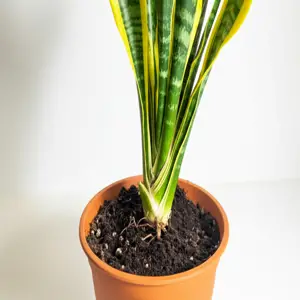
succulent root rot
| Variety | Susceptibility to Root Rot | Notes |
|---|---|---|
| Sansevieria trifasciata ‘Laurentii’ | Moderate | Common and relatively hardy. |
| Sansevieria trifasciata ‘Hahnii’ | Slightly Higher | Smaller size may make it more vulnerable. |
| Sansevieria cylindrica | Moderate | Drought-tolerant but still susceptible. |
| Sansevieria masoniana | Slightly Higher | Slow-growing and can be more sensitive. |
| Sansevieria bacularis ‘Mikado’ | Low to Moderate | More resistant if watered properly. |
Regardless of the variety, the key to preventing root rot is to water sparingly and provide well-draining soil.
The Role of Humidity in Snake Plant Health
While snake plants are known for their drought tolerance, humidity does play a role in their overall health and can indirectly affect their susceptibility to root rot. Snake plants prefer relatively low humidity levels, typically between 40% and 60%. High humidity can create a more favorable environment for fungal pathogens to thrive, which can increase the risk of root rot if the soil is already overly moist.
However, extremely low humidity can also be detrimental to snake plants. Dry air can cause the leaves to dry out and become brittle, making them more susceptible to pests and diseases. It can also slow down the plant’s metabolism, making it less able to tolerate overwatering.
To maintain optimal humidity levels for your snake plant, consider the following:
- Location: Avoid placing your snake plant in areas with high humidity, such as bathrooms or kitchens, unless you can ensure good air circulation.
- Air Circulation: Good air circulation helps to reduce humidity levels around the plant. Use a fan or open a window to improve air flow.
- Humidifiers: If you live in a dry climate, you can use a humidifier to increase the humidity levels around your plants. However, be careful not to overdo it, as too much humidity can be harmful.
- Grouping Plants: Grouping plants together can create a microclimate with slightly higher humidity levels. However, make sure to provide adequate spacing between the plants to allow for good air circulation.
Monitoring the humidity levels in your home can help you provide the best possible environment for your snake plant. You can use a hygrometer to measure the humidity levels in different areas of your home.
Snake Plant Root Rot and Pests: Is There a Connection?
While root rot is primarily a fungal issue, there’s an indirect connection to pests. A weakened plant, suffering from the early stages of root rot, becomes more vulnerable to pest infestations. Here’s how:
- Weakened Defenses: A plant struggling with a compromised root system can’t effectively absorb nutrients and water. This weakens its natural defenses, making it an easier target for pests.
- Stress Signals: Stressed plants emit volatile organic compounds (VOCs) that can attract certain pests. A plant with root rot is essentially sending out a distress signal.
- Favorable Conditions: The damp conditions that promote root rot can also favor certain pests, such as fungus gnats, which thrive in moist soil.
Common pests that might target a snake plant already weakened by root rot include:
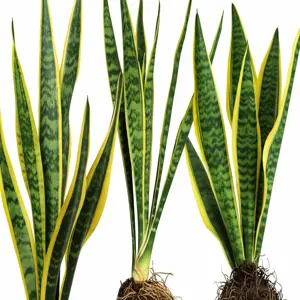
overwatering symptoms
- Fungus Gnats: These tiny flies are attracted to moist soil and decaying organic matter. Their larvae feed on decaying roots, exacerbating the root rot problem.
- Mealybugs: These sap-sucking insects can weaken the plant further, hindering its recovery from root rot.
- Scale: Similar to mealybugs, scale insects suck sap from the plant, adding to the plant’s stress.
Therefore, if you’re dealing with root rot, it’s essential to also inspect your snake plant for pests and take appropriate action to control them. This holistic approach will give your plant the best chance of recovery.
Frequently Asked Questions (FAQs)
How often should I water my snake plant?
Water your snake plant only when the soil is completely dry. This usually means watering every 2-4 weeks, depending on the climate, pot size, and other factors. It’s better to underwater than overwater.
What kind of soil is best for snake plants?
A well-draining potting mix is essential. A cactus mix or a mix of potting soil, perlite, and coarse sand is ideal.
Can I save a snake plant with severe root rot?
It depends on the extent of the damage. If most of the roots are rotted, it may be difficult to save the plant. However, you can try propagating new plants from healthy leaves.
What are the signs of overwatering a snake plant?
The signs of overwatering include yellowing leaves, drooping leaves, soft, mushy roots, and a foul odor.
Can I use tap water to water my snake plant?
Yes, you can use tap water, but it’s best to let it sit out for 24 hours before watering to allow the chlorine to evaporate.
How do I know if my snake plant is getting enough light?
Snake plants tolerate low light, but they thrive in bright, indirect light. If your snake plant is not getting enough light, it may grow slowly or have pale leaves.
Should I fertilize my snake plant?
Yes, you can fertilize your snake plant during the growing season (spring and summer). Use a diluted fertilizer solution and fertilize sparingly.
Is root rot contagious to other plants?
Yes, root rot can spread to other plants if they are grown in the same contaminated soil or if you use the same unsterilized tools.
Can I prevent root rot by using a self-watering pot?
Self-watering pots can increase the risk of root rot if not used correctly. It’s generally best to avoid using self-watering pots for snake plants.
What should I do with the soil after treating root rot?
Do not reuse the soil. Dispose of it properly to prevent the spread of fungal pathogens.
Conclusion: Final Thoughts on Keeping Your Snake Plant Root Rot-Free
Root rot can be a devastating problem for snake plants, but with the right knowledge and proactive care, you can prevent it from happening. The key takeaways are: avoid overwatering at all costs, ensure proper drainage with the correct potting mix and pot selection, and regularly inspect your plant for any early signs of trouble. The indoor plant trend continues to be strong, and with more people bringing greenery into their homes, understanding how to care for these plants properly is more important than ever. Stay informed about the latest best practices and regulations, and always prioritize the health of your plants.
Remember that each plant is unique, and what works for one may not work for another. Adjust your care routine based on your plant’s specific needs and the conditions in your home. If you do encounter root rot, act quickly and follow the steps outlined in this guide. Don’t be afraid to experiment and learn from your mistakes. Even experienced plant owners sometimes face challenges, and the key is to learn from them and adapt your approach.
By following these guidelines, you can keep your snake plant healthy, vibrant, and root rot-free for years to come. These resilient plants are a wonderful addition to any home, providing beauty, air purification, and a sense of connection to nature. So, embrace the joy of plant ownership and enjoy the many benefits that snake plants have to offer!
Auto Amazon Links: No products found.
Perfect Plants Christmas Tree Saver 8oz. | Easy Use Xmas Tree Preserver Food | Have Healthy Green Christmas Trees All Holiday Season
$7.99 (as of December 24, 2025 06:36 GMT +00:00 - More info- Product prices and availability are accurate as of the date/time indicated and are subject to change. Any price and availability information displayed on [relevant Amazon Site(s), as applicable] at the time of purchase will apply to the purchase of this product.
FirEver Pure Christmas Tree Food | Preserver Additive & Season Extender for Live Xmas Trees | Keep It Green, Reduce Needle-Drop | Miracle Freshness (8 oz)
$9.16 (as of December 24, 2025 06:36 GMT +00:00 - More info- Product prices and availability are accurate as of the date/time indicated and are subject to change. Any price and availability information displayed on [relevant Amazon Site(s), as applicable] at the time of purchase will apply to the purchase of this product.
Wilt-Pruf® Christmas Tree/Cutting Preserver Spray |Preserves Christmas Trees, Wreaths, Garlands, Cuttings and Carved Pumpkins | Reduces Needle Drop | Keeps Cut Trees Fresh Longer | Natural (32 oz)
$21.99 (as of December 24, 2025 06:36 GMT +00:00 - More info- Product prices and availability are accurate as of the date/time indicated and are subject to change. Any price and availability information displayed on [relevant Amazon Site(s), as applicable] at the time of purchase will apply to the purchase of this product.
Transmission Funnel - 3'' Wide 23'' Long Funnel with Hose – Flexible, Reusable, No Leak Design Featuring Elastic Long Hose | Long Funnel for Oil, Gas, Coolant, Automotive and Garage Applications
$7.95 (as of December 24, 2025 06:36 GMT +00:00 - More info- Product prices and availability are accurate as of the date/time indicated and are subject to change. Any price and availability information displayed on [relevant Amazon Site(s), as applicable] at the time of purchase will apply to the purchase of this product.
TreeVive™ Natural Christmas Tree Preservative – Extends Freshness & Needle Retention – Enhances Pine Scent – Safe, Non-Toxic, Pet-Friendly Additive for Hydration, Color & Holiday Tree Care
$8.99 (as of December 24, 2025 06:36 GMT +00:00 - More info- Product prices and availability are accurate as of the date/time indicated and are subject to change. Any price and availability information displayed on [relevant Amazon Site(s), as applicable] at the time of purchase will apply to the purchase of this product.
Muddy Mat® | Super Absorbent Door Mat Indoor, Microfiber Quick Dry Chenille Entryway Rug, Non-Slip Front Door Mat, Indoor Mats for Entryway, Machine Washable Pet Rug, Grey 30"x19"
$19.95 (as of December 24, 2025 12:36 GMT +00:00 - More info- Product prices and availability are accurate as of the date/time indicated and are subject to change. Any price and availability information displayed on [relevant Amazon Site(s), as applicable] at the time of purchase will apply to the purchase of this product.
OLANLY Dog Door Mat for Muddy Paws 30x20, Absorbs Moisture and Dirt, Absorbent Non-Slip Washable Doormat, Quick Dry Chenille Mud Mat for Dogs, Entry Indoor Entryway Carpet for Inside Floor, Grey
$9.99 (as of December 24, 2025 12:36 GMT +00:00 - More info- Product prices and availability are accurate as of the date/time indicated and are subject to change. Any price and availability information displayed on [relevant Amazon Site(s), as applicable] at the time of purchase will apply to the purchase of this product.
Zevo Flying Insect Trap Official Refill Cartridges - Fits Both Zevo Trap & MAX Indoor Fly Trap - Authentic Trap+Lock Technology to Catch Gnats, House & Fruit Flys (4 Official Refill Cartridges)
$14.97 (as of December 24, 2025 12:36 GMT +00:00 - More info- Product prices and availability are accurate as of the date/time indicated and are subject to change. Any price and availability information displayed on [relevant Amazon Site(s), as applicable] at the time of purchase will apply to the purchase of this product.
TERRO Ant Killer Bait Stations T300B - Liquid Bait to Eliminate Ants - Bait System - 12 Count Stations for Effective Indoor Ant Control
$10.88 (as of December 24, 2025 12:36 GMT +00:00 - More info- Product prices and availability are accurate as of the date/time indicated and are subject to change. Any price and availability information displayed on [relevant Amazon Site(s), as applicable] at the time of purchase will apply to the purchase of this product.
ThermoPro TP50 Digital Hygrometer Indoor Thermometer Room Thermometer and Humidity Gauge with Temperature Humidity Monitor
$11.99 (as of December 24, 2025 12:36 GMT +00:00 - More info- Product prices and availability are accurate as of the date/time indicated and are subject to change. Any price and availability information displayed on [relevant Amazon Site(s), as applicable] at the time of purchase will apply to the purchase of this product.

